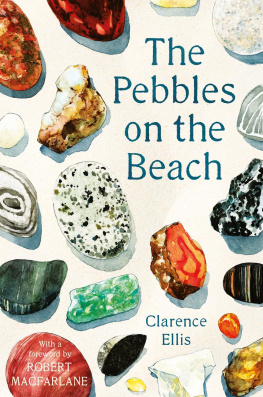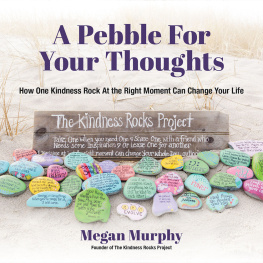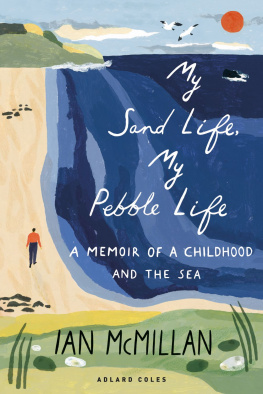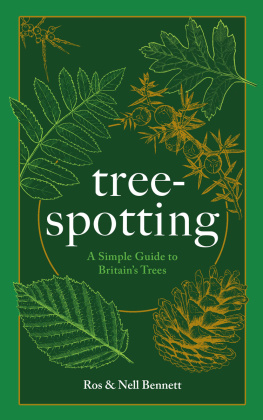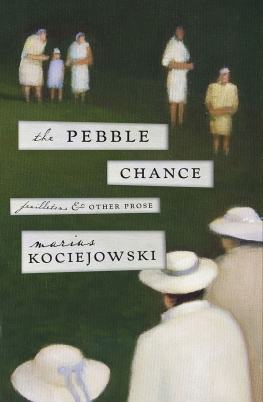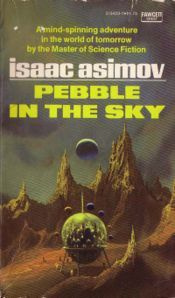Our understanding of geological processes has changed over the last sixty years, but that does not stop this book from being enjoyable. Please open out the book jacket for your pebble-spotters guide. The illustrations are based on the authors collection.
Do think carefully about what you bring home. It is illegal to remove pebbles from sites of special scientific interest, such as Chesil Beach, so please check local rules (these are usually posted in the car park or other points of access).
Clarence Elliss The Pebbles on the Beach was the stonebook of my childhood. I first pulled a copy of the Faber paperback off the shelves of my grandparents house in north-east Scotland when I was perhaps ten or eleven, by which age I was already like most children a passionate lover of pebbles. So too were my grandparents. Their cold house near the Cairngorms contained hundreds of stones that they had picked up around the world, many kept in water-filled bowls in order to preserve their lustre. They even constructed a wall-mounted cabinet with tiny white-wood compartments, each of which held a different object: a pine cone, a cowrie, a rupee, a geography cone shell (once deadly, now dead), and rows of polished pebbles, the lovely names of which they tried to teach me: chalcedony, onyx, jet, moss agate
In my grandfathers garage there was a stone-polishing machine that clearly possessed, to my young mind, magical powers. Into its barrel we would heap handfuls of dull pebbles gathered from the riverbank at the bottom of the garden or the beaches of the Moray Firth. Then my grandfather would fill the barrel with water, add a measured concoction of sands, cap the barrel shut, and set it grumbling away. Days later we would return to the garage and watch as he uncapped the barrel, poured away the water, rinsed the contents of its grit and then tipped out onto a workbench a slew of stone-jewels: glowing green serpentine, red jasper, glossy pink Cairngorm granite, glinting with mica flecks, and little white eggs of quartz. How had this transformation happened? Even the brown flints that we took from the shingled driveway of the house became miraculous after polishing: their craquelure showing clear, the cloudings and translucencies of their surfaces resembling maps or planet-atmospheres.
Elliss wonderful book became my guide to the finding and the making of these pebbles, and his writing was also one of my first encounters with what I now think of as deep time the aeons of earth history that stretch dizzingly away from the present, humbling the human instant. As Jacquetta Hawkes the visionary author of A Land (1951), a deep-time tour of the making of the British landscape put it in her appreciation of the books first edition: Mr Ellis writes simply and well about the natural processes which compose, shape and transport pebbles. Indeed he does, and that simplicity or calm clarity is one of this books durable qualities. I valued then, and still do now, the manner in which Ellis approaches his subject from first principles (What is a pebble? How have raised beaches come about?), and the hint of moral duty with which he infuses the study of geology and geomorphology (We paid some attention to sandstone in the last chapter, but we must examine it more closely). I still prize the insider tips he offers: that serpentine discloses its identity by means of its wax-like lustre, or that if you break a quartzite pebble into two pieces and strike one against the other in darkness there will be an orange-coloured flash and a not unpleasant but very difficult to describe smell.
So Pebbles became the book that we took as a family when we went pebble-hunting on the coasts of Britain: wandering bent at the waist along the beach, eyes peeled for rough orbs of agate, quartz prisms, purple jasper and elusive amber (so hard to tell in its unpolished form from the flints among which it usually lies). It was also the book that accompanied thousands of other families to the beach; lodged in glove-boxes, stuffed in rucksacks. And thanks to this new edition, it should now find a fresh generation of readers, nearly sixty-five years since its first publication in 1954. Mr Ellis has solved that difficult problem of what to do at the seaside when the weather is against sun-bathing: collect pebbles, ran the opening line of a review of the book in The Spectator that year. Well, quite.
Elliss popular work can be seen, I think, as a quiet addition to the surge of high-quality, British natural-history writing that followed the years after the end of the Second World War above all the New Naturalist series, the first volume of which was published in 1945. The New Naturalist project tasked itself with interesting the general reader in the wildlife and scenery of Britain by uniting the scientific knowledge of professional naturalists with a commitment to communication and evocation. Elliss prose shares its traits with the best of the New Naturalist writers. It is lucid, patient in its explanations, and hospitable to all-comers. He relishes his subject across its aspects: this is an expert speaking to amateurs, but also an enthusiast seeking to ignite enthusiasm in others. Every pebble is of some interest, he declares, democratically, brooking no argument. Reading his book is rather like taking a lesson from a charmingly earnest, slightly awkward and impassioned geography teacher. There are some very funny Pooterish moments and some bright flashes of illumination.
Ellis loves words as well as pebbles. It was he who first broke open the language of stones for me. He strikes names against roots to produce flashes and smells: Gneiss (pronounced nice) is a word of German origin, derived from an Old High German verb gneistan, to sparkle. In sunshine, especially after rain, it certainly does sparkle, as it is a highly crystalline rock. Schist (pronounced shist) is derived from a Greek word schistos, meaning easily split. Ellis evidently admires language for its capacity to grade and sort the world but also for the poetry it carries. As an ordinary-looking pebble can be sliced and polished to reveal dazzling patterns, so, in Elliss hands, can a word. Here you will learn (if you have already forgotten them from Geography GCSE) swash, backwash and fetch as the terms necessary to help understand the rudiments of wave action upon the movement, the shaping and the smoothing of pebbles; you will meet swales and fulls as being respectively the ridges and hollows of shingle formation on the seaward-side of long shingle banks, and you will be given the word-gifts of crinoid and calyx, piriform, foliation and xenoliths: the last denoting those stones that have been transported by glacial action far from their origin, often identifiable by the striations (Latin: stria, a groove) that show where they had been scraped along by a glacier while frozen into its underside. Yes, Ellis tumbles words as the sea tumbles pebbles, bringing them into new and surprising relations with one another. In this respect, his book stands as a shy and bespectacled cousin to Hugh MacDiarmids extraordinary long poem On a Raised Beach, published twenty years before Ellis, and written in a mixture of synthetic Scots and geological baroque. All is lithogenesis starts that poem, famously, fabulously, before beginning its shingle-litany: Stones blacker than any in the Caaba,/Cream-coloured caen-stone, chatoyant pieces,/Celadon and corbeau, bistre and beige.

